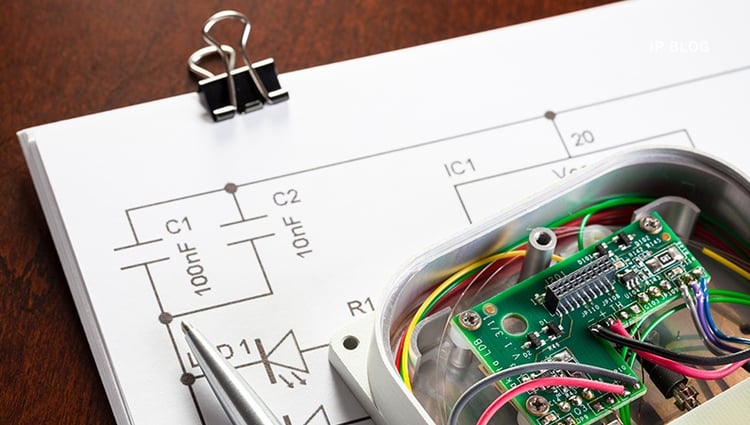Benefits of design patents and protecting designs internationally

Steven Shape, managing partner at Dennemeyer & Associates, explores the positives and negatives of current design patent laws in the USA and under the Hague Agreement.
Design patent protection has become very important in today’s high stakes, competitive markets. A design patent protects an article’s appearance, versus a utility patent protecting its construction or operation. Design patents have been issued to protect the designs of the iPhone 7 cellular phone, Mac Book Pro® laptop computer, Apple Watch® wristwatch and Beats® headphones, all of which have significant competitive value separate and apart from their functions. Companies like Google and Facebook protect their graphical user interface designs through worldwide design patents. With the then largest jury verdict in a patent case handed down in the Apple vs. Samsung decision (having a number of Apple’s design patents at issue), it is no wonder that design patents have increased in popularity and recognition as important competitive tools and precious property rights.
Attorneys’ fees and official fees for design patent applications are less expensive than for a utility patent application. Design patent applications have an advantage over provisional patent applications, as they do not expire in one year. Accordingly, a design patent is a relatively inexpensive way to achieve “patent pending” status. “Patent pending” can be marked on a product after a design patent application covering all or part of the product design is on file with the United States Patent and Trademark Office (USPTO). Marking a product as “patent pending” places potential competitors on notice that a product may receive future patent protection and they may be reluctant to become involved with a product that may be deemed to infringe. Early stage investors have been known to assess value for Intellectual Property and may be more inclined to invest in, and assess a higher value to, start up companies having a full complement of IP, including a family of design patents protecting the designs of their products.
A design patent application will typically issue faster and with less expense than utility patent applications. Importantly, patent rights will exist that can be enforced by seeking injunctive relief and a suit for damages at a much earlier stage in the product life cycle. In a “knock-off” situation, favorable injunctive relief is available if no substantial issues are raised with regard to patent validity. Claim construction issues, if any, are typically less complex than with utility patents, and this simplifies the injunctive process. When a design patent is issued, lost profit and reasonable royalty damages are available under 35 USC 284. Further, under 35 USC 289, a design patent infringer can be liable to the extent of the infringer’s total profit. This is a valuable remedy, particularly if the patented design is not being sold and lost profits are not available. Another valuable benefit of a design patent is that no maintenance fees are required over the life of a design patent.

Design patents protect a single design and substantially similar designs. The scope of design patent protection is determined by the ordinary observer test. This test considers how close the patented design is to the prior art and a crowded field of art can influence this test. When a patent application contains a single ornamental design, and there are no prior art references that anticipate or render the design obvious, a design patent likely will be granted. Claiming techniques, including claiming individual design features, are typically used to overcome the narrow protection of the single design requirement of design patent applications. Also, a design patentee may file a request for a broadening reissue if it is discovered –within two years of issuance of the design patent – that the original claim is too narrow. Certain standards exist for such a filing and intervening rights may protect those who are already manufacturing, selling, using, or importing a non infringing design into the U.S. A further advantage of obtaining a design patent can be to establish secondary meanings for trademark and trade dress rights. A challenge of claiming trademark infringement is that protection for descriptive terms and shapes of articles of manufacture may not be obtained until after the secondary meaning is established. Obtaining a design patent may have the effect of preventing competitors from copying the design until secondary meaning is established. This is a well-known strategy pursued by Apple in protecting the designs of their iPod® devices. Apple first obtained design patents on the iPod® preventing third party copying. Then, after secondary meaning was established, Apple applied for and received trademark protection on the three dimensional shape of the iPod® – this turned out to be a very lucrative strategy for Apple Inc.
Protection of individual design features is one of the most effective ways to protect the appearance of a product. Many first to market products enjoy consumer recognition at an early stage. When this occurs, and competitors use the same shape for the same component, but alter other components, or use the same shape for a portion of the same component, the competitor may have intruded upon the identity of the brand and its appearance in the marketplace. This can create confusion in the marketplace but may have done so in a way that avoids design patent infringement. A solution to this problem is to use certain design patent prosecution techniques to protect the individual design features of your product. These techniques may include broken line claiming, the inclusion of multiple embodiments, portion claiming, continuation practice, and a combination of such techniques.
Capitalizing on these design patent benefits and expanding to an international stage, recent United States design patent law changes have streamlined international design patent application filing and the issuance of design patent protection worldwide. In May 2015, the United States became a signatory to the Geneva Act of the Hague Agreement concerning the international registration of industrial designs (the “Hague Agreement”). United States applicants can now obtain design patents in any of the 66 countries or regions by filing a single international application directly with the World Intellectual Property Organization (WIPO) or the United States Patent and Trademark Office (USPTO). This eliminates the need to file a separate application in each country. Now, a United States applicant can initiate the design patent examination process by filing a single international application, selecting one or more contracting countries and proceeding under the Hague Agreement. A substantive examination will then be conducted under the laws of each selected country.

The European Union, Japan, Norway, Switzerland, South Korea, the United States and numerous other countries (presently totaling 68) can be included in the single Hague Agreement application. Argentina, Australia, Brazil, Canada and China are currently not contracting parties, but are expected to sign on in the near future. The United States becoming a signatory to the Hague Agreement has produced many cost effective improvements in United States design patent laws. Specifically, the term of design patents in the United States is now 15 years from the date of issuance, adding one year to the previous term of 14 years. Updating or changing information in a filed international design application has also been streamlined. When a change of ownership occurs in a design patent application, notification can be provided to one receiving office to accomplish the update in all selected countries. The applicant of an international design application can be the inventor(s) or an entity such as the assignee.
Companies seeking broader protection for their designs can now file additional applications containing photographs or color drawings without the additional costs of preparing a petition or paying a fee. The international design application under the Hague Agreement will publish in six (6) months. Patentees receiving issued design patents may be able to recover a reasonable royalty as damages for infringement occurring after the date of publication up to the date of issuance of their design patent. This change parallels the current law for United States utility patents. The United States enactment of the Hague Agreement for design applications provides a very cost effective and streamlined process for protecting an applicant’s designs in multiple countries. In combination with the value added by a design patent portfolio in the United States, international protection can certainly expand and protect a product’s marketplace presence.
This article was originally published in The Patent Lawyer Magazine, issue January/February 2018.
